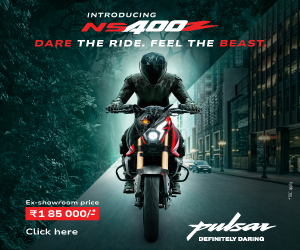 After ruling the 150cc performance bike segment for almost four years, Yamaha YZF-R15 has finally got some competition from none other than the compatriot – Honda. The CBR150R has arrived and we are here with the first impressions of the bike that seems to be determined to dethrone the king that has ruled so far.
After ruling the 150cc performance bike segment for almost four years, Yamaha YZF-R15 has finally got some competition from none other than the compatriot – Honda. The CBR150R has arrived and we are here with the first impressions of the bike that seems to be determined to dethrone the king that has ruled so far.
The first look at the CBR150R is enough to tell us that this one is almost identical to its elder brother CBR250R. However, a detailed look at the machine will bring out the differences like the two round pilot lights in the headlight cluster have a different treatment than what we see on the 250. The exhaust end can is much smaller; the front visor gets a slightly darkened tint and of course a whole new set of graphics. Look closely and you notice a whole new twin-spar frame on the motorcycle. Once in the saddle, the bike feels a little smaller and shorter than its elder brother and weighs only 138 kg as against the 161 kg (non-ABS version) CBR250R.
The first riding impressions of the bike tell us that this one needs some high revving to get going. With red line at 11,500 rpm, there is no doubt you will be twisting your right wrist harder for more fun. The bike makes 17.8 PS of peak power at 10,500 revs and 12.66 Nm of maximum torque at 8,500 revs. This, for city riding looks like a little on the negative side. However, let the horses lose on a weekend ride to the twisties, rev the engine hard and you won’t be disappointed. Aiding the performance and sporty side of the bike is its chassis and suspension that work perfectly well for hard cornering.

All in all it looks like a good machine for sport riding, touring but an average one for city. However, the final word will come once we have done the performance testing and pitted the bike against the YZF-R15. Stay tuned for further updates!
Price: 1.32 Lakh (Std, OTR Pune)
1.33 Lakh (Dlx, OTR, Pune)






 The monocoque steel construction keeps Vespa’s steel body tradition alive and, at the same time, offers greater rigidity and durability. The single sided trailing arm in the front and coil spring shock-absorber in the rear are on the firmer side. You feel it over pronounced bumps, but overall the scooter is well-balanced, handles surprisingly well and even has a good turning circle. You can spend the entire day trotting around town on it comfortably.
The monocoque steel construction keeps Vespa’s steel body tradition alive and, at the same time, offers greater rigidity and durability. The single sided trailing arm in the front and coil spring shock-absorber in the rear are on the firmer side. You feel it over pronounced bumps, but overall the scooter is well-balanced, handles surprisingly well and even has a good turning circle. You can spend the entire day trotting around town on it comfortably.


 Yamaha have upgraded their first true Indian super sports bike, the R15. We take a ride to find out how it fulfils the aspirations of those who were eagerly looking forward to version 2.0 of this bike
Yamaha have upgraded their first true Indian super sports bike, the R15. We take a ride to find out how it fulfils the aspirations of those who were eagerly looking forward to version 2.0 of this bike  Royal Enfield’s new Desert Storm claims to be a tornado. Does it have enough force to sweep you off your feet? Let’s find out
Royal Enfield’s new Desert Storm claims to be a tornado. Does it have enough force to sweep you off your feet? Let’s find out


